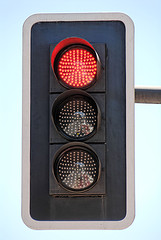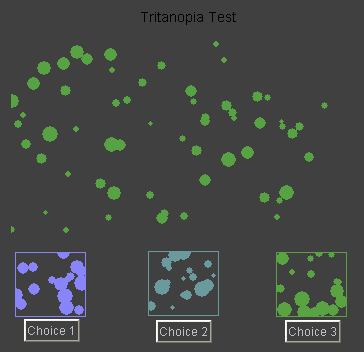The question if dogs are colorblind, specifically red-green colorblind or if dogs only see shades of gray is raised among dog owners quite often. Even on the internet the question concerning dog vision is discussed controversial. But there is a simple answer to that question which I would like to share with you supported by some scientific resources.
Actually there are two distinct questions which I would like to ask, answer and set in relation hereafter:
- Can dogs see colors? — Answer: Yes
- Are dogs colorblind? — Answer: Yes
Let me explain this two answers to you a bit more in detail.
Dogs can see colors
Dogs not only see in shades of gray but also can see distinct colors contrary to what most people belief. About one hundred years ago some scientific tests were made to find out more about the color vision of dogs. But these tests weren’t that scientific as they thought and the researchers concluded only that color vision doesn’t play a part in the daily life of a dog.
Only about 90 years later distinct researches have shown that dogs can perceive colors. Neitz, Geist and Jacobs researched in 1989 the color vision of domestic dogs and found the following facts:
- Dogs have two different color receptors in their eyes and therefore are dichromats.
- One color receptor peaks at the blue-violet range, the other at the yellow-green range.
- Conclusion: Dogs are green-blind which is one form of red-green color blindness also called deuteranopia.
This results were support by later researches of Jacobs with colleagues in 1993 and Miller and Murphy in 1995.
Dogs are colorblind
This directly leads us to the second question concerning the color blindness of dogs. Colorblind doesn’t relate to not see any colors but describes the fact that you can’t see the same color range as somebody with normal vision. Because of that any kind of color vision deficiency is called color blindness. Therefore dogs are colorblind because of their dichromatic color vision.
Colors dogs can’t distinguish
Actually the color spectrum made up of wavelengths of light is the same to all of us. Only the perception of those colors can be quite different. As dogs only have two different color receptors in their eyes they have problems to distinguish certain colors:
- Red — Orange — Green
- Greenish Blue — Gray
- Different shades of Purple
The list is not completed and there are a lot of different shades which can’t be differentiated if you are colorblind. And the conclusion is dogs can see colors but are at the same time colorblind.
More facts on the vision of dogs can be found in the book Handbook of Applied Dog Behavior and Training, Vol. 1: Adaptation and Learning by Steven R. Lindsay.




